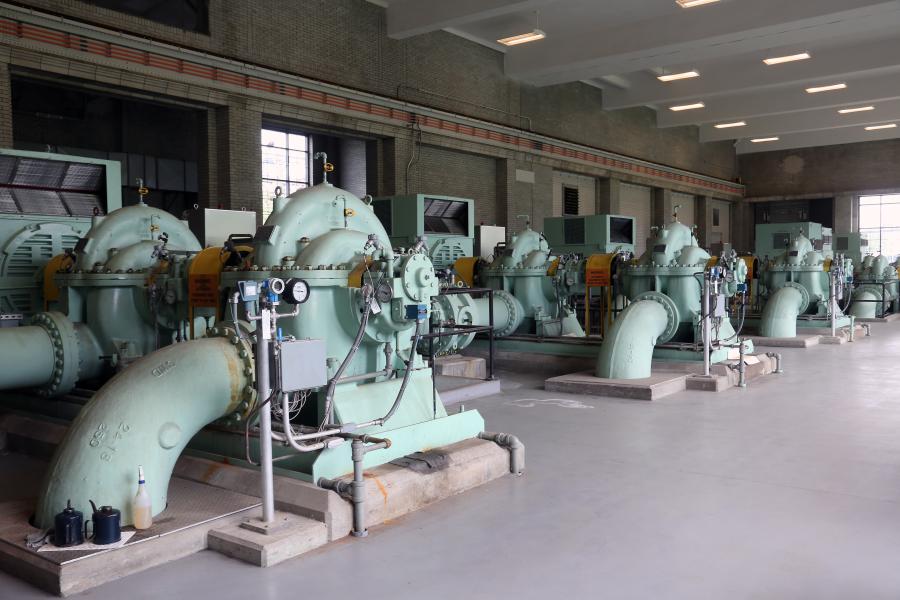Delivering Safe Water Involves More than Mains

Reliably delivering high-quality drinking water to 1.4 million customers across a 640-square-mile service area requires an extensive distribution system.
Once water is treated at one of our four water treatment plants, it must be delivered over 25 miles out and 750 feet up, and everywhere in between.
In general, the elevation of Northeast Ohio rises as you move farther from Lake Erie. Because our treatment plants are all situated close to Lake Erie, our source of drinking water, we have to fight friction and gravity to push water uphill to customers located farther away from the lake.
To get water to flow uphill we use a carefully designed system of 16 pump stations, 22 towers and tanks, and 5,300 miles of water mains.
Pump stations help push water farther and higher into our service area. Each time we have to use another set of pumps, we create a new pressure zone. Because Cleveland Water’s service area is so large, our distribution system has four major zones and nine pressure districts based on elevation and topography.
Low and First High service areas are served by primary pump stations at each treatment plant. These pumps stations, however, couldn’t deliver water to higher elevations without the water pressure dropping too low.
If the water pressure was too low, customers could experience water shortages, insufficient pressure in their homes and, in some cases, water quality problems. Conversely, the pressure that would be required if those primary pump stations tried to adequately reach the higher elevations would be far greater than our infrastructure could handle.
Pressure in our distribution system is a careful balance. The pressure must be high enough to get where it needs to go reliably and safely. But it can’t be too high, otherwise, the infrastructure would be under too much stress and break. Water pressure in our system is generally in the range of 45 to 120 pounds per square inch (psi), with a few exceptions.
In order to keep pressure at an appropriate level, Second and Third High service areas have a system of 12 secondary pump stations. Water leaving a treatment plant loses pressure as it travels. Secondary pumps increase the pressure of the water so that it can be delivered to locations farther out and higher up.
Over the next few years, we are investing over $40 million in capital funds to build and renovate these critical pieces of our infrastructure.
A new pump station is currently under construction on Aurora Road in Bedford Heights that will serve the southeast part of the Second High service area. This pump station is in addition to one located in Bedford serving the same area. For redundancy purposes, each of the nine pressure districts is serviced by at least two pump stations.
Next year, a new pump station is scheduled for construction in Richfield. This facility will serve customers located at the highest elevation in our system, creating a new, tenth pressure district. Also scheduled for next year, existing pump stations in Lyndhurst and Independence will be rebuilt. In addition, we’re investing $15 million over the next 5 years on renovations to six pump stations, located in Strongsville, Beachwood, Macedonia, Middleburg Heights, and Parma.
